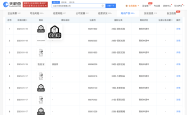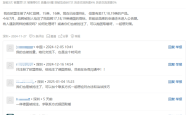商标滥用 英文翻译怎么写
Title: Understanding and Avoiding Trademark Abuse in English Translation for Businesses
In the highly competitive world of commerce, trademarks play a crucial role in establishing a brand's identity and reputation. However, the issue of trademark abuse, especially in the context of English translation, can pose significant challenges to businesses. Here, we'll explore this problem and offer valuable suggestions to safeguard your business interests.

(图片来源于网络,侵删)
I. The Significance of Trademarks and the Perils of Abuse in English Translation
Trademarks are not just names or logos; they are the essence of a brand that consumers recognize and trust. When expanding into international markets or simply using English translations for various business purposes, the integrity of the trademark must be maintained. Trademark abuse in English translation can occur in several ways. For instance, incorrect translations that change the intended meaning and essence of the brand can mislead customers. A poorly translated trademark might give an impression of unprofessionalism or even convey a completely different message than what the brand stands for.
Another form of abuse is the unauthorized use of similar-sounding or looking English translations by competitors or unscrupulous entities. This can create confusion in the market, causing customers to mistake another product or service for yours. Such confusion not only dilutes the brand value but can also lead to a loss of potential customers and revenue.
II. How to Identify Potential Trademark Abuse in English Translation
Businesses need to be vigilant in spotting signs of trademark abuse. Firstly, keep a close eye on the market, especially in regions where English is commonly used or where you are targeting with your English-translated marketing materials. Monitor competitor activities and look for any instances where similar-sounding or visually similar English translations are being used.
Secondly, conduct regular online searches using relevant keywords related to your trademark in its English form. This includes searching on social media platforms, e-commerce websites, and industry-related forums. If you come across any posts or listings that seem to be using your trademark in an improper or confusing way, it could be a sign of abuse.
Also, pay attention to customer feedback. If customers mention confusion about your brand's English translation or if they report seeing something that resembles your trademark but isn't quite right, it's worth investigating further.
III. Protecting Your Business from Trademark Abuse in English Translation
A. Register Your Trademark in English and Relevant Languages
One of the most effective ways to safeguard your brand is to register your trademark in its English form, especially if you plan to use it extensively in English-speaking markets or for international business operations. Additionally, consider registering in other languages that are relevant to your target markets. This legal protection gives you the right to take action against any unauthorized use or abuse of your trademark.
B. Develop Clear Brand Guidelines for English Translation
Establish detailed brand guidelines that specifically address how your trademark should be translated into English. Include instructions on maintaining the brand's core meaning, tone, and style. Provide examples of correct and incorrect translations to ensure that anyone involved in your marketing or communication efforts, whether internal staff or external agencies, understands the proper way to handle the trademark in English.
C. Educate Your Team about Trademark Protection
Your employees are the front line in protecting your brand. Conduct training sessions to educate them about the importance of trademarks and the risks associated with trademark abuse in English translation. Teach them how to identify potential abuse and what steps to take if they suspect something is amiss. Encourage them to report any suspicious activities promptly.
D. Monitor and Enforce Your Trademark Rights
Regularly monitor the market to ensure that no one is misusing your trademark in English translation. If you do detect abuse, don't hesitate to take legal action. This could involve sending cease and desist letters to the offenders or filing lawsuits if necessary. The key is to be proactive in protecting your brand's reputation and intellectual property.
In conclusion, trademark abuse in English translation is a serious concern for businesses aiming to expand globally or simply communicate effectively with English-speaking audiences. By being aware of the issue, identifying potential abuse, and taking proactive steps to protect your trademark, you can safeguard your brand's integrity and maintain its competitive edge in the market. And remember, if you ever face challenges related to handling e-commerce violations or any other issues that could impact your business operations, we are here to help you.Contact us: 15813825595 (phone WeChat) to get quick solutions and expert guidance to keep your business running smoothly.










很专业铁铁们,一步到位稳稳的
我香奈儿的店三四天就搞定了👍
我自己搞了一次失败浪费了一次机会,这东西还得让专人来弄
效率高,终于解冻了
老板人不错很大气,做事很讲效率